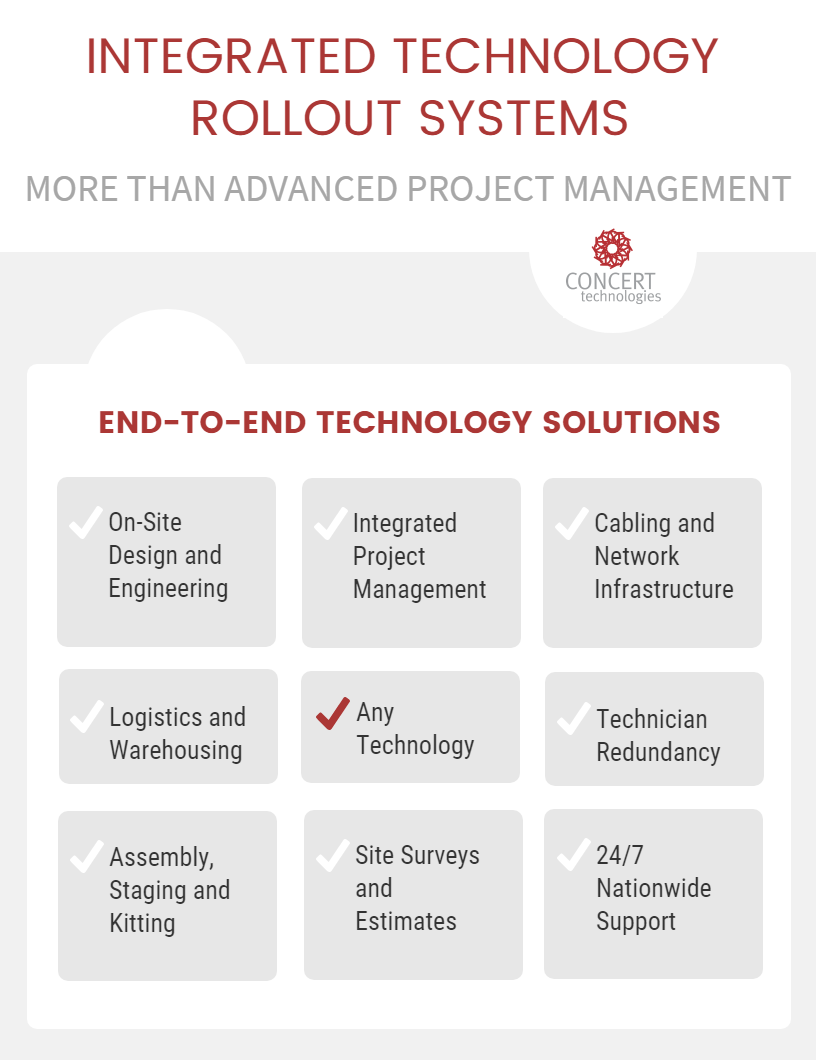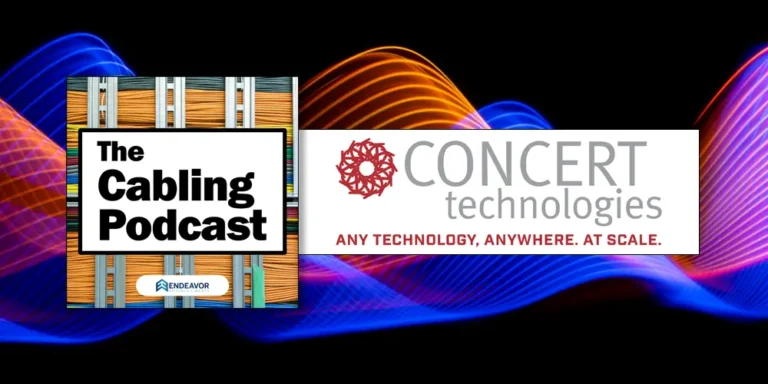A Technology Rollout System is a structured set of processes that anticipate events which cause deployment set-backs while providing proactive methodologies designed to mitigate risk. These same processes and methodologies provide consistent, high-quality deployments, predictable cost structures and are scalable to fit the needs of high volume rollouts.
The Technology Rollout System uses formal project management techniques to relate cost to schedule performance, identify potential problems and sources, and provide and enable rapid multi-service rollouts of any technology. Because the strategic vision for the project drives investment, value measures are established and fully-aligned project, program and deployment management strategies dictate the project’s execution.
A Technology Rollout System is much more than just project management. It is composed of four major parts that each rely on a unique set of project management processes. A Technology Rollout System streamlines the deployment process, mitigates on-site risks, and enables stronger project management practices for future work.

Services Model
The Services Model is the platform upon which each member of the rollout team relies on to successfully perform assigned deliverables. (Here is a detailed guide on Configuring a Successful Rollout Team that outlines the duties of the Project Manager, Lead Facilitators, Technology Manager, Warehouse Manager and Partner Manager).
From the first work order request to the final install, the Project Manager, Project Facilitators, Warehouse Manager, Technology Manager and Partnership Manager collaborate using an integrated, multi-service project management platform that is purpose-built to accommodate any technology rollout.
End-to-end technology solutions are crafted using project management best practices for all types of services that will be needed. Equipment configuration, network upgrades, equipment refreshes and installations, decommissions, return services, logistics, warehousing, sparing (and hot sparing), cable assembly and pinouts, shipping, technology installation, billing, technical support, service support and full-time solution support are all part of a 360-degree technology solution. These services are the backbone of a rapid, cost-effective technology rollout.
Single Tier Process Structure
Together with the Services Model, A Single Tier Process Structure ensures that the Project Manager has the necessary resources to oversee all types and sizes of technology deployments. Whether they are hardware, cabling or structural engineering rollouts, the planning, organizing, staffing, and managing of complex technology rollout projects involves numerous high-skill tasks. A Single Tier Process Structure manages all field partners through direct partnerships, ensuring full control of the project is in the technology rollout company’s hands.

Internal Resources
The Internal Resources part of a Technology Rollout System includes the internal operations, IT infrastructure, software applications, training, and company culture of the technology rollout company. These factors ensure communication redundancy with clients and provide support systems for every component of the Process Structure, Services Model and all Partnerships.
Partnerships
Field Partnerships are a key component to a successful technology rollout system. Local field technicians are managed by the technology rollout company to ensure that all sites are serviced quickly and efficiently, with qualified field technicians in close proximity to all site locations.
Built in Redundancy
A well-structured Technology Rollout System ensures Field Technician redundancy to guarantee the project requirements are entirely met. While the duty to ensure the right number of field technicians is assigned to each job falls to the Partnership Manager, it is the responsibility of the Project Manager to make sure the Partnership Manager understands the true scope of work (SOW) so that they can assign the correct number of technicians.
Further, it is the Project Manager’s responsibility to protect the project against their own challenges. For example, there are many unexpected factors, including illness and personal related issues, that can lead to their inability to work. To mitigate this, they must train their lead Project Facilitators and rely on them to carry out the project to completion, if needed.
Logistics and Warehousing
The warehousing and inventory-management of the project’s necessary equipment is essential to a efficient deployment. All equipment and materials are tracked, monitored, and reported by the Warehouse Manager in a web-based customer portal. The delivery of equipment and material to each site and subsequent dispatch of the appropriate field technicians is supervised by the Project Manager, who relies on the Project Facilitators and Partnership Managers to manage the technicians.
Nationwide and Global Support
The active participation of the technology rollout team throughout the entire life-cycle of each project guarantees that every site has access to a full support team.
Project reporting and documentation is provided through an online platform in which customers can submit new work orders and alter existing ones. It will account for changes in a project’s scope and provide regular updates on the progress of the overall project.
A Technology Manager is constantly monitoring and updating the online platform. When a new work order is received, it is automatically routed to the Project Manager to initiate on-premise resolution.
The Bottom Line
A Technology Rollout System is more than just project management. Analyzing task requirements, evaluating the cost impact of alternative solutions, maintaining and tracking available personnel and providing status and summary reports of every deliverable are all part of a fully functioning rollout system, but expert rollout companies deliver an additional, full range of services to ensure all types of new technology solutions are easily implemented.
Rapid, cost-effective solutions for large, complex technology rollouts can be achieved with the proper Technology Rollout System in place. Experienced Rollout Companies provide a proven system of processes and methodology that are relied on to reduce project costs and ensure timely project completion for the installation of all types of new technology and communications infrastructure services.




